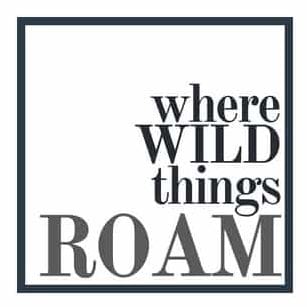Roam Wild on Lady Musgrave Island
Lady Musgrave Island is a jewel of the Southern Great Barrier Reef off Queensland, Australia. A part of the Bunker Island Group, it lays 96km north-east of Bundaberg and 59km east-north-east of Seventeen Seventy.
It is the second most southerly cay of the Great Barrier Reef in the Capricornia Cays National Park. The island – about 19 hectares – is a coral cay, which means it is made up almost entirely of coral skeletons. This uninhabited island is known by the Traditional Owners of the land as Wallaginji, meaning Beautiful Reef.
The reef off Lady Musgrave Island offers a home to an astronomical number of fish across 1,600 species. Included among the lot are species of damselfish, tuskfish, and wrasses (the most common inhabitants), as well as species of angelfish, blennies, butterfly fish, chimeras, clownfish, coral trout, cowfish, gobies, hawkfish, pipefish, potato cod, pufferfish, rays, scorpion fish, seahorses, sea perch, sharks, snapper, surgeonfish, and triggerfish. It is estimated that approximately 10 per cent of the world’s fish species live within the Great Barrier Reef
Fish aren’t the only critters to occupy the reef in huge numbers. The realm features approximately 400 species of corals, 300 species of ascidians, and nearly 5,000 species of mollusks. Occupying the coastline are 22 species of seabirds, 32 species of shorebirds, and more than 150 additional bird species. Along with six species of sea turtles, the reef houses 17 species of sea snake, seven species of frogs, and the occasional saltwater crocodile. What’s more, the Great Barrier Reef boasts 30 species of Cetacea (whales, dolphins, and porpoises), the subantarctic fur seal, and one of the largest populations of dugongs on Earth. A majority of these you can find off Lady Musgrave Island.
Camping on the island

Accessible only by boat, Lady Musgrave Island is one of the few places in Queensland where you can witness the turtle breeding and nesting, uninterrupted. A Queensland National Parks camping permit will set you back AUD$6.95 per person, per night and only allows for tent camping. There is no running water, no facilities, no electricity and you can definitely forget trying to use your phone as there is no reception. There are just two composting toilets and an emergency radio in case things go bad. Everything you take onto the island must be carried on and everything must be carried off, rubbish included.
From the drop off point, it is a 450-meter walk through the middle of the island to the campsite. It is important to note the isolation on the island and the need for proper camping gear for all types of weather. Summer is hot and can be frequented by storms, so wet weather gear is essential.
Days on the island can be spent in and out of the water, snorkelling the fringing coral reef, naps on the beach under the shade of the trees, bird-watching or just relaxing in paradise.
Glamping on the Reef

If the idea of roughing it camping is beyond your comfort zone, then you can opt to stay on the luxurious Lady Musgrave Experience – a pontoon off Lady Musgrave Island offering unique reef accommodation.
From the moment you step onboard the Reef Empress for the two-hour boat ride to the pontoon, you feel the first-class experience. The luxurious 35-metre catamaran transfer has a superyacht feel to it, which carries on when you arrive on the pontoon.
The lower deck has everything you need for a day on the reef – a fully stocked bar and kitchen area, hot showers and toilets, seating and tables and a dive shop with all the equipment needed to explore the underwater world. It is the launching pad out into the ocean and kaleidoscope of coloured reef below the surface.
Take a staircase down from the lower deck and you find the underwater deck, where you sleep on bunks surrounded by floor to ceiling glass. Here it feels like you are in a fishbowl and the marine life is looking in on you.
The upper deck houses the gorgeous glamping tents, positioned with views out across the reef and to Lady Musgrave Island. They have plenty of storage space, canvas sides that you can keep down for privacy or roll up for the ultimate view, phone charging ports and some fairy lights strung across the roof for night lights.
Diving and snorkelling off Lady Musgrave Island

Divers can relish in the uncrowded sites including the nearby Fairfax Islands. Their remote location ensures a pristine dive experience on a healthy reef full of marine life. Also part of the Bunker Group of islands, the Fairfax Islands were once used by the Australian Military as a bombing range. Now the islands remain empty and you are unable to go ashore, but I was more interested in what lay under the surface here.
Their remote location ensures a pristine dive experience and as I made the descent on my first dive, I was impressed by the health of the reef and array of marine life. The first dive was a rather fast drift dive, as a strong current pulled me along shelves of plate coral, over massive brain corals and alongside calm loggerhead turtles also riding the current.
Resurfacing after the dive, I was hungry for more time in this ocean wonderland, so after returning to the pontoon, I dive straight back into the big blue and set off for a snorkel. The reef in the shallower waters was just as spectacular and a sense of relief washed over me to see how healthy the reef looked. The coral was thriving, and the abundance of fish life and marine animals was a delight to see. This reef ecosystem was well and truly alive.
Wildlife at Lady Musgrave

You would have to be really unlucky to visit Lady Musgrave Island and not see a turtle. The island and surrounding reef are full of them. The Great Barrier Reef has six of the seven species of marine turtles found worldwide, including the Green, Hawksbill, Loggerhead, Flatback, Leatherback, and Olive Ridley. Lady Musgrave Island and reef are important feeding, resting and nesting sites for Green, Hawksbill and even recently spotted, Loggerhead turtles. It makes it a prime site for turtle viewing.
Within five minutes of arriving on the island, I was straight into the water for a snorkel and found myself surrounded by seven turtles munching away on the algae coating the coral. It was like turtle soup – everywhere I turned there was a turtle in sight. I thought I had hit the wildlife jackpot until I discovered over the coming week that this was as regular as the lapping waves on the shore.
At night is when the true turtle magic happens. Between October to March, female turtles haul themselves slowly up the beach to dig their nest and lay eggs. It is both fascinating and challenging to watch as you are witnessing the start of life for such an endangered species and then mentally start willing the exhausted females back down the beach to be reunited with the ocean. It soon became my nightly routine to find a front-row seat to this extraordinary show of nature and watch the turtles emerge one by one from the ocean.
One night I counted 34 turtles head up the beach and nest, although I am told the record stands around 175 in one night. The mornings brought a true indication of just how many turtles came up that night, with a minefield of dug nests and turtle tracks up and down the beach like a road map of movement.
Being part of the Capricorn Bunker Group, which contains up to 75 per cent of all seabird biomass of the entire Great Barrier Reef, Lady Musgrave Island is identified as a significant seabird breeding island. The islands vegetation, specifically Pisonia trees, provides habitat for thousands of nesting seabirds including the white-capped noddy terns, bridled terns, black-naped terns, silver gulls and more. The nesting season starts in October and the birds busy themselves around the island in preparation. After the first day on the island, the constant sound from the birds became white noise and I became a professional bird dodger.
After spending a week out camping on the island and in her surrounding waters, I can certainly say that the Wallaginji people got it right. Lady Musgrave Island is one of the most beautiful reefs I have ever encountered.
Top Tips for camping on lady Musgrave

Besides the necessities like water, food, tent and camping gear, here are 5 items I found useful on the island.
- Snorkel, Mask and fins – you are going to want to explore every inch of the reef and turns out it is your daily bath time anyway.
- Extra camera batteries – there is no electricity so unless you have a solar charger, you will need spare batteries.
- Head torch with red light – nesting turtles are sensitive to light, so it is best to have a red-light head torch for moving around at night so as not to disturb the turtles.
- Hydrolyte Tablets – Pop this in your water bottle every day for better hydration.
- Mozzie repellent – at night the mosquitos are brutal! This is certainly a must-have.




































